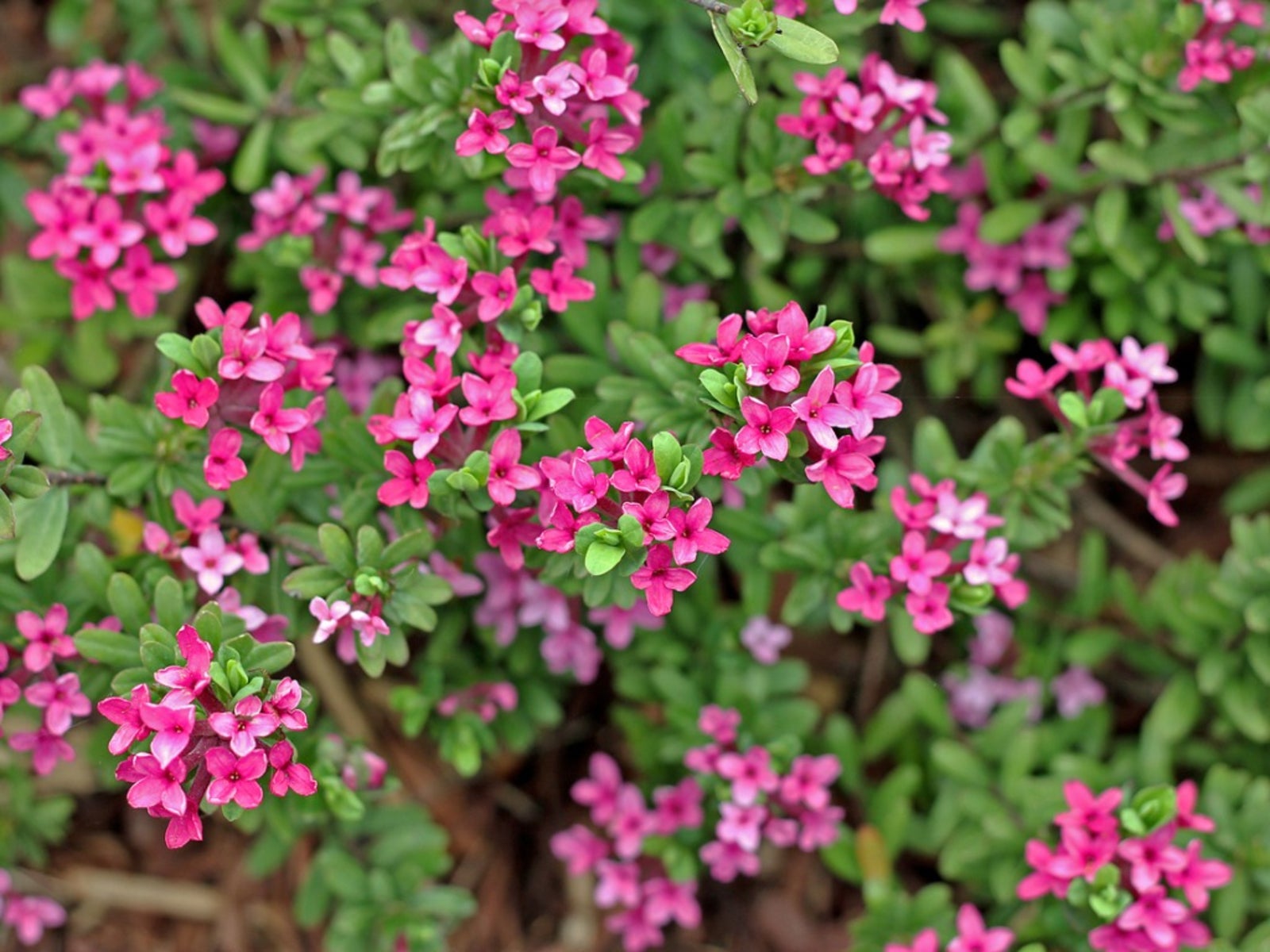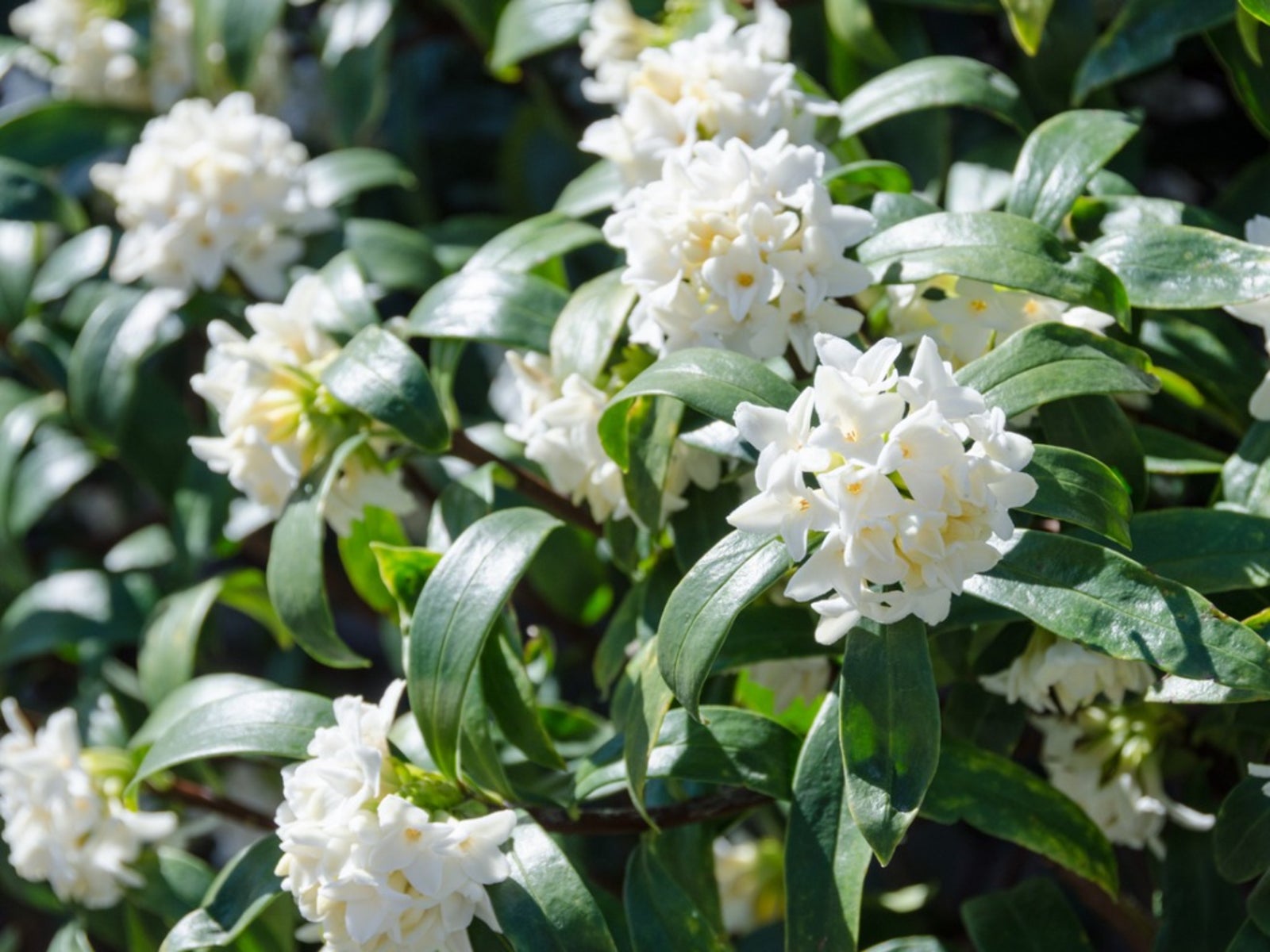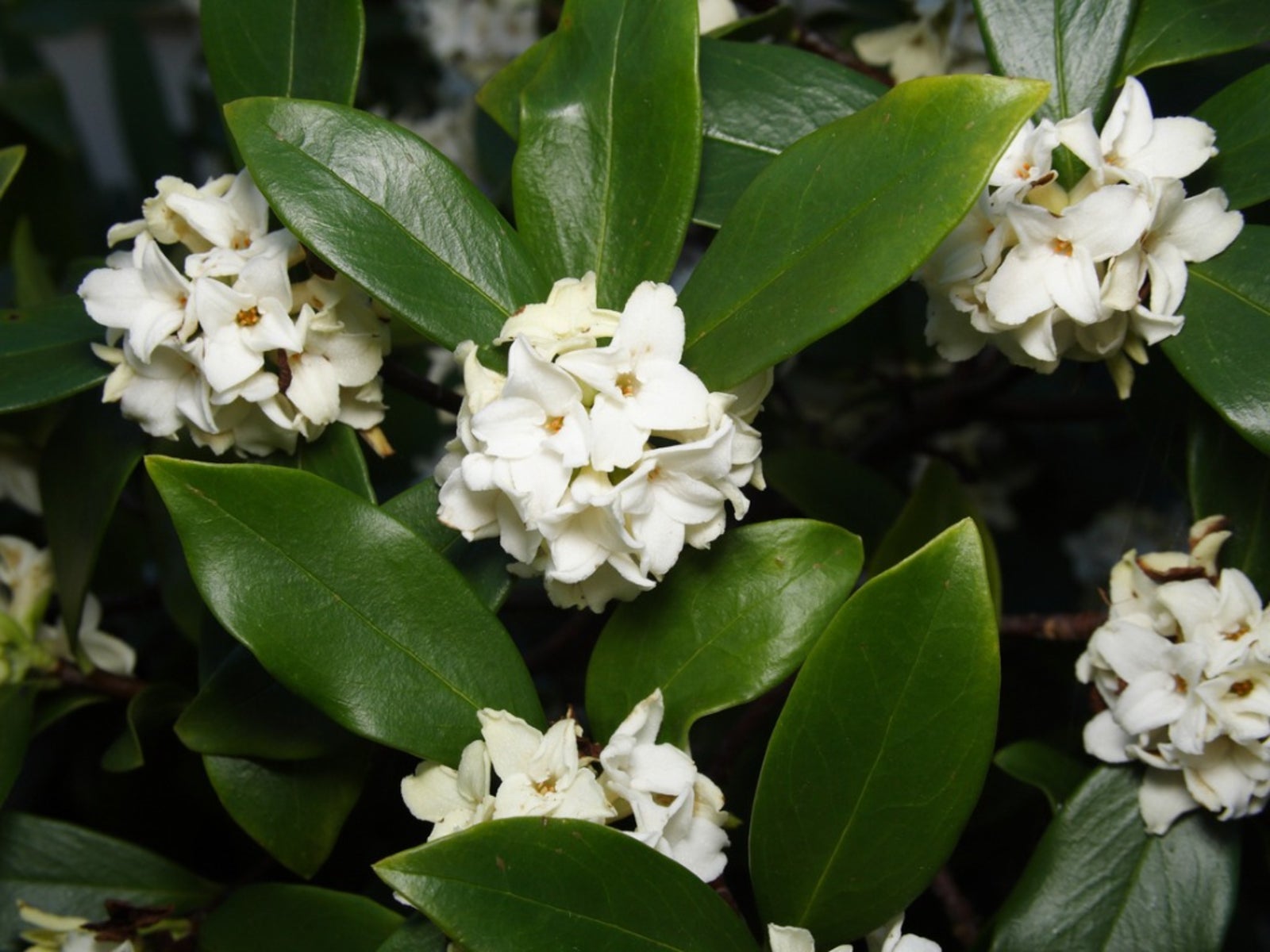Daphne Plant Types: Growing Daphne Plants In The Garden


Lovely to look at and enticingly fragrant, daphne is a delightful landscape shrub. You can find daphne plant types to suit most any need, from shrub borders and foundation plantings to stand-alone specimens. Find out about the different daphne plant types and how to care for them in this article.
Growing Daphne Plants
Before you decide that this fragrant beauty is just what you want, there are a couple of things you should know about daphne. First of all, the plant is poisonous. In fact, it is so toxic that chewing on the flowers, foliage, or red berries can be fatal. You should never plant daphne shrubs where pets or children play.
Another potential problem with daphne is that it is known to die suddenly and seemingly without cause. Due to this tendency, you should think of it as a temporary plant. Place the shrub in areas where you can easily remove and replace it as it becomes necessary.
If you can live with these two drawbacks, you’ll find that caring for daphne plants is not difficult. Grown as an informal shrub, it doesn’t need pruning, and this makes the plant practically carefree. For a more formal appearance, trim the tips of the stems after the flowers fade.
Daphne Plant Varieties
One challenge of growing daphne plants is choosing a type. There are several varieties of daphne, and these are the most commonly grown and easily available:
- Winter daphne (D. odora) is the variety to choose if you like a powerful fragrance. 4 feet (1 m.) tall with narrow, glossy leaves, winter daphne is the type most likely to suffer from sudden death syndrome. The flowers bloom in late winter. ‘Aureo-Marginata’ is a popular winter daphne with variegated leaves.
- Garland daphne (D. cneorum) is a low grower that reaches heights of less than a foot (31 cm.), making it ideal for rock gardens and edging pathways. The trailing branches spread about 3 feet (91 cm.). Covered with flowers in the spring, you can cover the stems with mulch after the flowers fade to encourage rooting. The best varieties include ‘Eximia,’ ‘Pgymaea Alba,’ and ‘Variegata.’
- D. x burkwoodii can be evergreen, semi-evergreen, or deciduous, depending on the climate zone. It grows 3 to 4 feet (1 m.) tall and blooms in late spring, often followed by a second flush of flowers in late summer. The popular ‘Carol Mackie’ is a variegated variety.
How to Care for Daphne
Daphne grows in U.S. Department of Agriculture plant hardiness zones 4 or 5 to 9 but check the type you want to grow since there is a lot of variation from plant to plant. It needs a location with full sun or partial shade and moist soil. Well-drained soil is a must.
Choose your site well because daphne doesn’t like to be transplanted. Plants grow best if they are given a thick but light layer of mulch. This helps keep the roots cool and the soil moist. Even though the soil is covered, check to make sure it never dries out. It’s best to water the shrub when rainfall is scarce.
Gardening tips, videos, info and more delivered right to your inbox!
Sign up for the Gardening Know How newsletter today and receive a free copy of our e-book "How to Grow Delicious Tomatoes".

Jackie Carroll has written over 500 articles for Gardening Know How on a wide range of topics.
-
 Looking For Plants To Give You The Soft And Fuzzies? Try These 5 Fuzzy Leaf Plant Options
Looking For Plants To Give You The Soft And Fuzzies? Try These 5 Fuzzy Leaf Plant OptionsLovers of texture, drama, silver foliage and tactile plants will adore these special sensory garden additions. These fuzzy leaf plant options will leave you all aglow
By Susan Albert
-
 Get Ready For A Summer Of Hummers! Grow These Full Sun Hummingbird Plants and Flowers
Get Ready For A Summer Of Hummers! Grow These Full Sun Hummingbird Plants and FlowersIf you’re lucky enough to enjoy a sunny backyard, make sure you are maxing out on your pollinator opportunities and grow these full sun hummingbird plants and flowers
By Tonya Barnett
-
 No Flowers On Daphne Plants – Reasons For Daphne Not Blooming
No Flowers On Daphne Plants – Reasons For Daphne Not BloomingDaphne plants are not always easy to grow, and even those with vigorous foliage don't necessarily flower. If you find your Daphne not blooming, you'll want to read some tips on how to get blooms on Daphne plants. Click here to learn more.
By Teo Spengler
-
 Pruning Winter Daphne: How And When To Cut Back Daphne
Pruning Winter Daphne: How And When To Cut Back DaphneDaphne shrubs generally do not need to be pruned unless they are growing into another plant. If this does become necessary, it is important to know how to prune daphne. This article will help with that.
By Bonnie L. Grant
-
 Growing Winter Daphne Plants: Care For Winter Daphne
Growing Winter Daphne Plants: Care For Winter DaphneDaphne plants are short-lived evergreen shrubs. Gardeners often complain that growing winter daphne is difficult. Follow the suggestions in this article for successful growth and blooms on your daphne bushes.
By Becca Badgett